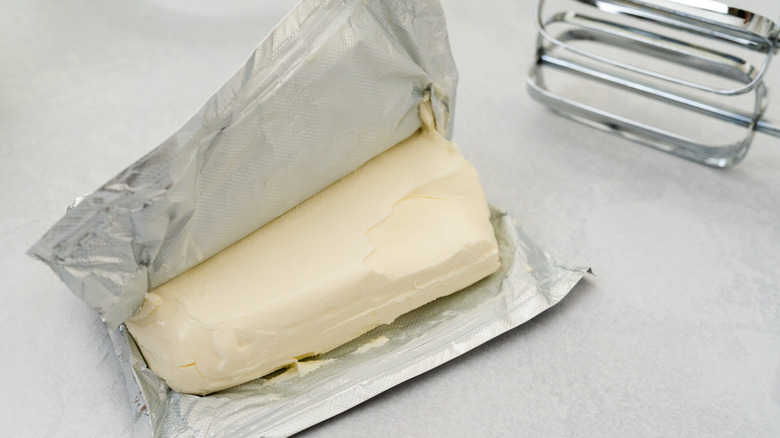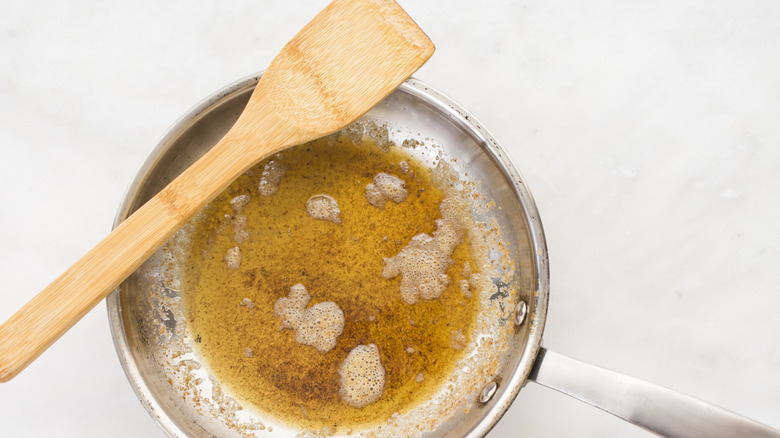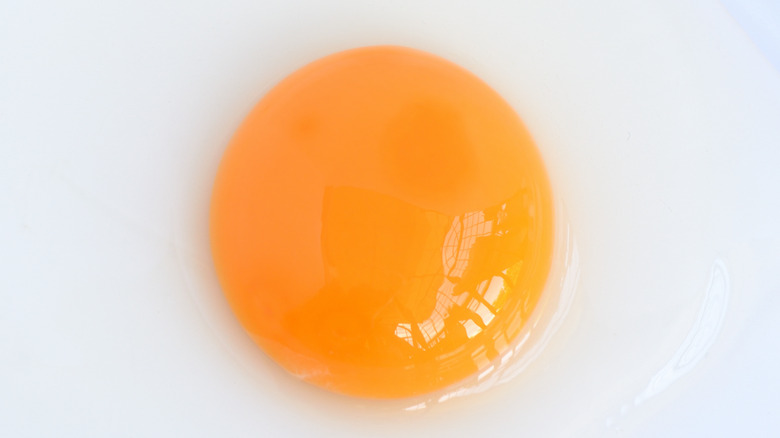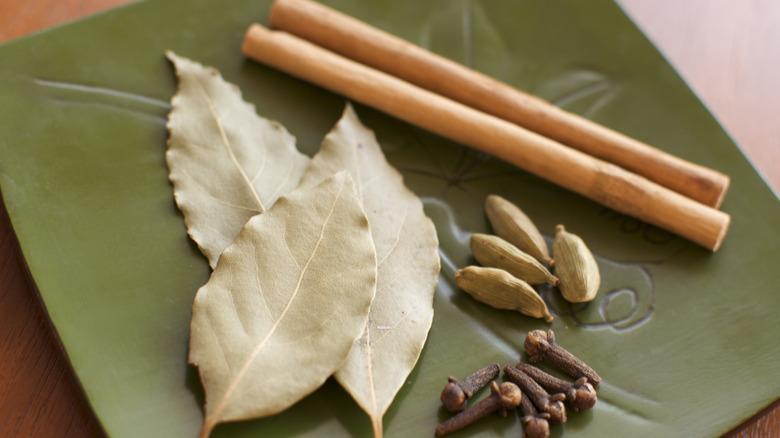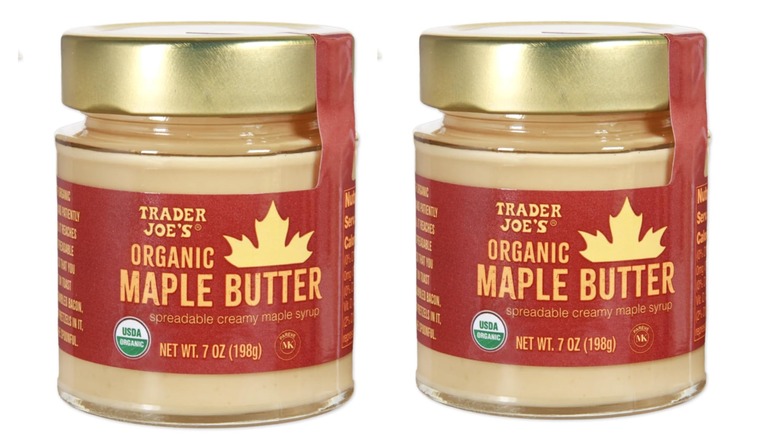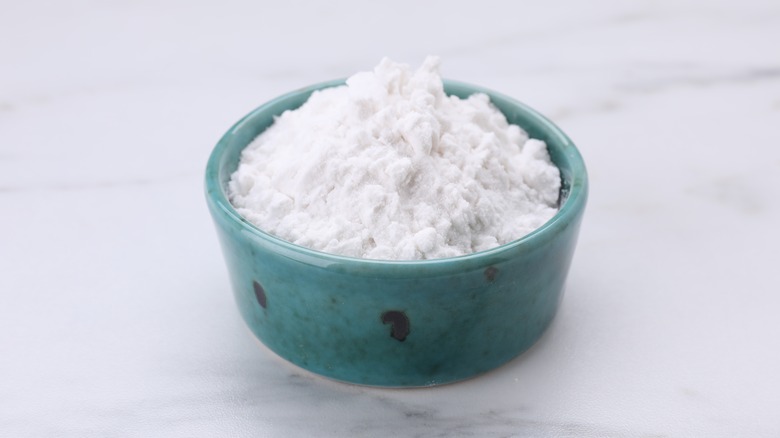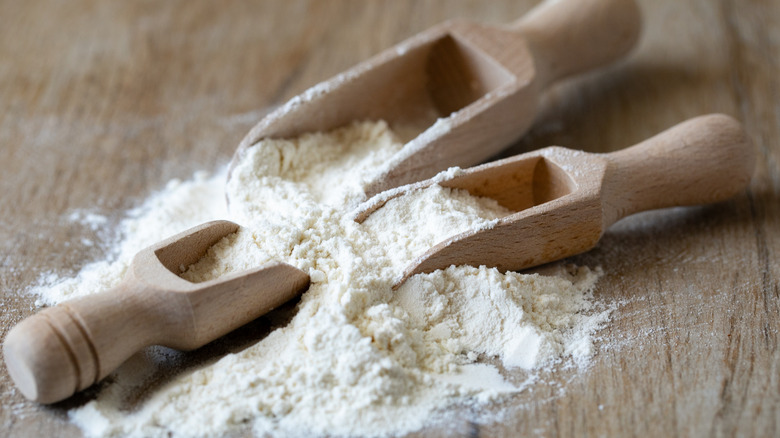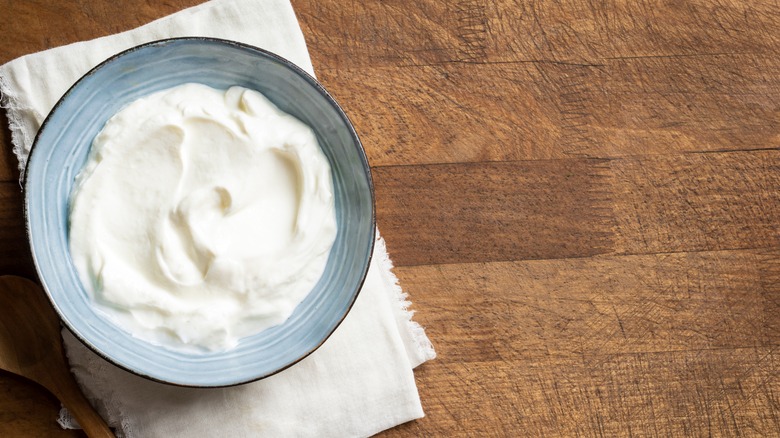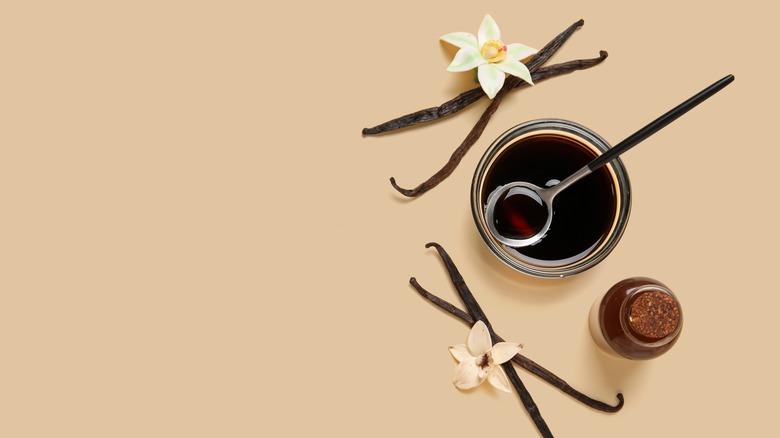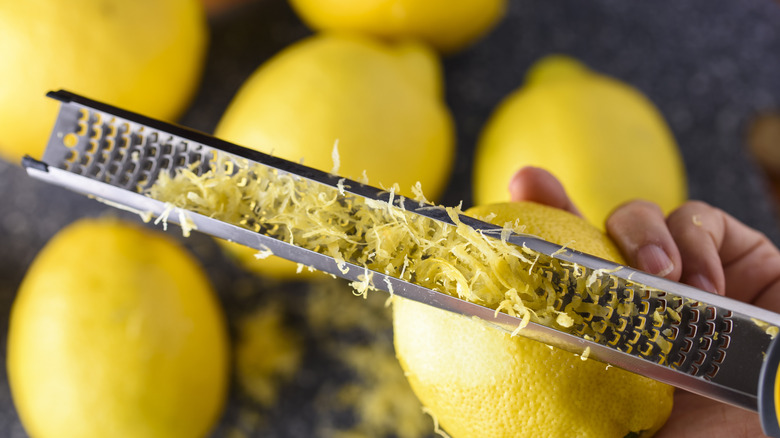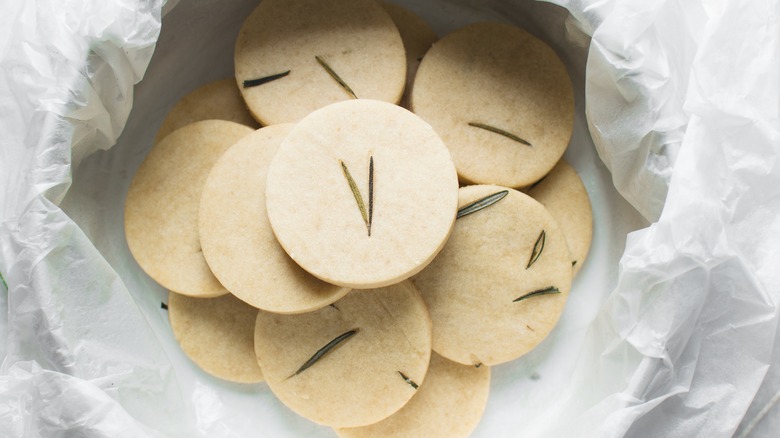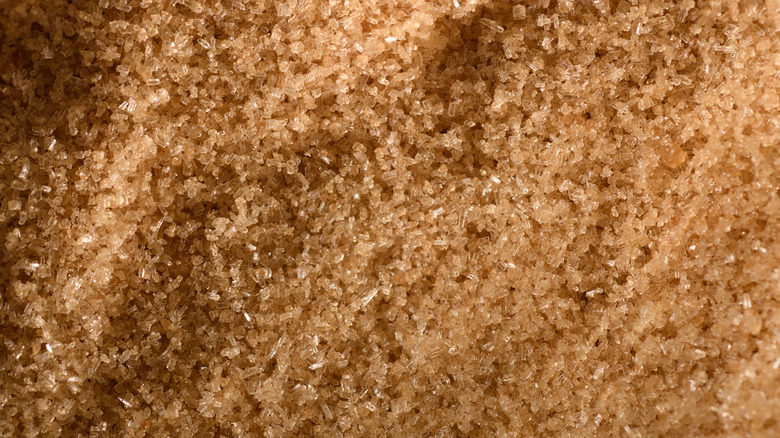13 Unexpected Ingredients You Should Add To Sugar Cookies
We may receive a commission on purchases made from links.
Cookies are the thing that made me interested in pursuing a career in food. I've enjoyed my fair share of them over the years at bakeries and in train station cafés, but nothing compares to the experience of making and baking cookies with my grandmother and my mother in their tiny home kitchens. The sugar cookie stands out as being one of my favorite things to bake over the years. I have fond memories of mixing up a stand mixer of dough, rolling out and slicing the dough with a cookie cutter, and patiently sitting down and peering into the oven to watch them bake.
While some folks may think of it as the plain Jane of the cookie world, I like to think of the sugar cookie more as the foundation of other types of cookies. Once you can make a good sugar cookie, then you can transform it into something else by adding things like molasses, chocolate chips, or oatmeal and raisins. No amount of add-ins will save a fundamentally bad sugar cookie.
Don't just think of the humble sugar cookie as a stepping stone for something more exciting, either; there are also ways that you can play with different recipes and ingredient additions to alter your cookie's taste and texture. Here are some of my favorite ways to enhance the humble sugar cookie with ingredients that you might already have on hand.
Cream cheese
Cream cheese is one ingredient that you may think belongs in a cheesecake more than it would ever belong in a batch of warm, fresh-from-the-oven sugar cookies. But let me tell you this: It's an absolutely life-changing ingredient. My holiday sugar cookies always have a little bit of cream cheese in them because I find that the ingredient makes the dough easier to work with and also imparts a subtle tang that helps deflect from the sweetness of the cookie. Moreover, the fat ensures that your cookies have the perfect in-between bite of not being too snappy, but also not being too chewy. I'll even add a scoop of cream cheese to my cocoa powder-infused sugar cookie dough to help elevate its flavor.
Cream cheese isn't a liquid, so it doesn't make the batter too moist. Since the fat doesn't evaporate in the oven, cream cheese-infused sugar cookies always come out with the perfect texture. Moreover, I find that adding fat helps keep the gluten strands short, which will prevent your cookies from becoming too chewy. Be sure to use full-fat cream cheese and mix it well with the other ingredients to prevent any clumps.
Brown butter
Everything can be made better with brown butter. There are tons of uses for this toasty fat, and baking cookies is just one of them. When you cook the butter on the stove for long enough that the milk solids begin to brown and toast, you'll find that the entire aroma and flavor profile of the butter changes. Instead of just getting that greasy, buttery flavor, your sugar cookies will start to take on a more hazelnut profile. It's the perfect way to elevate your sugar cookies and make their flavor more complex.
The exact process for adding the brown butter to your recipe will depend on the recipe itself. If you're working with a recipe that calls for you to cream the butter, for example, you'll want to make sure that you stick the brown butter in the fridge for a little bit so it can re-solidify. Then, you can add in your sugar and whip up the whole thing together until it's smooth and creamy. You should also avoid using butter straight from the stove because the warmth may cause textural issues with your other ingredients — most notably, the eggs.
Egg yolk
Egg yolks are an ingredient that is commonly found in sugar cookies already — unless, of course, you're trying your hand at a vegan recipe. The egg offers some protein to give your cookie structure, while the yolky center offers a boost of fat and a subsequently decadent mouthfeel. They're a must-have item for your sugar cookie recipe, but you should also consider reserving some egg yolks specifically to glaze each of your cookies.
If you neglect to add a glaze to the top of your cookies, you may find that their color comes out lackluster and pallid. But, mix up some egg yolk in a bowl and grab a pastry brush, and you'll be well on your way to creating sugar cookies that shine. You could also use some egg yolks to whip up a cookie frosting. Simply mix together the egg yolks and your food coloring of choice. Then, use a small paintbrush to decorate your cookies with fun designs before putting them in the oven and baking them. It's a less sugary option than a classic royal icing, but it will still allow you to put your own creative spin on this timeless recipe.
Brandy
The secret to a great batch of sugar cookies may be hiding inside your liquor cabinet. Brandy, a subtly oaky and delectably sweet liquor, can elevate your cookie recipe. After all, most sugar cookies already have some derivative of vanilla in them, so this alcohol-forward beverage brimming with similar flavor notes may not be too far off.
While it's generally true that baking will burn off some of the alcohol taste, you'll want to avoid being too heavy-handed in your recipe. A couple of tablespoons of brandy stirred right into the batter should suffice. However, if you like the taste of brandy and want it to be more forward in your recipe, you may want to add a couple of drops of it to your icing instead.
Chai spices
At what point does your sugar cookie transform into another cookie? While I tried to avoid suggesting additions that would turn your plain ol' sugar cookies into something else, like by adding chocolate chips or dried fruit, there's one particular spice blend that I kept thinking about: chai.
Chai spices don't have to just be for tea; they're great additions to a range of baked goods, too. For example, you can also use them to upgrade banana bread or give your crème brûlée a fall twist. So, your next culinary experimentation might be seeing what happens when you combine chai spices and a classic sugar cookie recipe.
The exact ingredient list and proportions will vary depending on the spice blend that you choose. Though, there are a few staple ingredients that often make an appearance: cardamom, ginger, cinnamon, nutmeg, allspice, and peppercorns. As you can imagine, this will introduce a unique flavor to your cookies, so it's better to be very light-handed when mixing it into your batter. Chai-spiced sugar cookies would be an excellent pairing with your favorite type of tea as an afternoon snack, especially if it was complemented by a subtly sweet vanilla bean glaze. The slightly sweet topping would allow the cookie's flavors to shine while supplementing everything with a boost of sugar and that bold, vanilla flavor.
Maple butter
Maybe I'm just saying this because I lived in Vermont, but maple butter is truly the nectar (or may I say spread) of the gods. Imagine if you could take a container of maple syrup and make it spreadable. Although its name might imply that it contains dairy, it's merely maple syrup that's been cooked down until it's super thick. So, it's completely suitable for vegans, and folks who can't get enough of the maple syrup are guaranteed to use it in a whole host of dishes.
If I'm making a batch of sugar cookies and don't want to get too complicated with a topping, I'll grab a jar of maple butter from my cabinet. Once the cookies have cooled down slightly, I'll add a bit to the top of each one. Or, to infuse a stronger maple profile, I'll add the butter directly to the cookie dough.
As any good baker will know, adding sugar to a cookie recipe may alter the way it bakes. Increasing the sugar content can cause the cookie to burn more quickly and will also change the dough's composition. So, I'd recommend finding a recipe that specifically calls for maple butter since it's more likely to have adjusted the other sweet ingredients and the baking time to accommodate this addition.
Cornstarch
Cornstarch is one of those ingredients that you may always keep in your cabinet but never seem to use. It's also one of those ingredients that you really wish that you would have bought when you come across a recipe that calls for it.
Like other thickeners, cornstarch is able to absorb moisture and change the consistency of a range of sauces and spreads. It's also the special ingredient that will change your sugar cookies forever. Besides keeping the moisture of your dough in check, adding cornstarch to your sugar cookie recipe will also prevent it from spreading as much. Hello, easy decorating!
The exact amount that you will add to your recipe really depends on the other ingredients in the recipe itself. So, like other suggestions on the list, you may want to consider opting for a recipe that already includes cornstarch in it. As a reference point, though, this sugar cookie recipe calls for ⅓ cup of cornstarch. I guess it's worth it to get that Costco-sized container after all.
00 flour
00 flour is an ingredient that you may be more familiar with if you've tried your hand at homemade pizza dough or fresh pasta before. This type of flour is ground much finer than the typical all-purpose flour that you'd use for a sugar cookie recipe. As a result, you'll get a cookie with a far softer bite. You can also increase the softness of your dough by adding other ingredients, like rice flour, into the batter. Rice flour is gluten-free, so it won't create a strong, elasticky structure that results in a chewy cookie.
Some recipes will use a 100% 00 flour base, while others will add a medley of different flour types to alter the profile of your recipe. Besides these additions, I would also recommend that you avoid overmixing your batter, as it causes the gluten to become too strong. As with all cookie recipes, only mix as much as you have to.
Sour cream
As I've become a more proficient baker, I've learned more and more about how valuable a container of sour cream can be to have on hand. While it's a great topping for burgers and DIY Chipotle bowls, it can also add moisture to almost every type of recipe — including sugar cookies.
Since sour cream isn't exactly liquid, it won't make your batter too wet. Rather, the high fat content will ensure that your cookies stay soft while also balancing out any extra sweetness. As you can imagine, sour cream yields very cake-like cookies. They're not great for cutting and decorating, but oh, are they good.
The key to adding sour cream to your recipe is to add the full-fat variety and select a recipe that's specifically made to accommodate this addition. Sour cream is — as you can expect — sour, so it may prematurely activate some of the leavening agents in your recipe. Find a recipe that adjusts its leavening agents with sour cream in mind rather than just throwing it all into a bowl and hoping for the best.
Flavor extracts
Hey, vanilla extract, did you just see me yawn? I'm just kidding; I'm a big fan of adding this ingredient to my sugar cookie recipe. Its taste is absolutely timeless and something that, despite the fact that you may only use a teaspoon or two, will definitely affect the aroma and flavor of your cookies. But that's not to say that vanilla extract is the only extract that's deserving of your recipe.
Extracts are a great way to add flavor isolates to your food. You can essentially concentrate the aromatic and flavor compounds in ingredients like orange, lemon, rum, and almonds into a compact formula. This process, though, is both a blessing and a curse. That's because it's nearly impossible to get as concentrated of a flavor from something like almonds without adding the chalky, mealy nut to your recipe. But, if you add too much of an extract, your whole cookie will only taste like that extract (or the alcohol it's suspended in). A teaspoon (if that) will suffice for most extracts.
If you feel that you have to use vanilla and only vanilla, I have good news for you on the flavor front, too. You can always swap out the extract for something a little more bold, like vanilla bean paste or vanilla powder. Besides the iconic flavor, you'll also get attractive little specks of vanilla bean in your finished cookie.
Citrus zest
Say it with me: You can use citrus zest in your sugar cookie recipe without turning your entire recipe into a lemon cookie. I find that a lot of bakers are afraid to experiment with lemon zest on the notion that it will magically transform their dessert into something reminiscent of a Lemonhead. Rather, citrus zest will do quite the opposite; it adds a gentle yet affirmative jolt of citrus flavor, compounded by the earthiness of the zest itself. Meanwhile, the lingering acidity will tame any super-sweet notes that would shift the balance of your cookie off in the first place.
I prefer the fresh flavor of lemon or orange zest over something that's been cooked (or, in this case, baked) down. Therefore, I would recommend adding the zest to the frosting or adding a garnish of it on top right before you plan on serving them. If you're a fan of all things citrus, though, consider making a slightly lemony frosting to offset the sweetness of your sugar cookie base, or even add a bit of lemon oil to flavor your entire dessert.
Herbs
The name "sugar cookie" implies all things sweet. But you don't just have to stick with a standard, hurt-your-teeth-sweet recipe. Rather, you can give your sugar cookies a savory spin by integrating some of your favorite dried and fresh herbs into the mix. The best thing is that these herbs won't inherently shift your cookie out of sugar cookie territory; they will instead instill balance and harmony into your recipe.
If you're just experimenting with savory herbs in baking, be sure to look up some of the complementary flavors to find ways to highlight the herbs rather than detract from them. Before I experiment with a herb in a cookie recipe, I'll look it up in "The Flavor Bible" to find complementary pairings. That way, I can use ingredients like lemon, sugar, caramel, and more to build upon the existing herby foundation.
Some of my favorite herbs to use in a cookie recipe include dried rosemary and thyme. The herbs tend to lean bitter if they're left whole, which is why I would recommend chopping them up finely before stirring them into your batter. You could also bring out the oils in the herbs by making an infused sugar by muddling the herbs with the sugar granules and letting the mixture sit for a while so that the oils can infuse. I find that this ingredient is a bit easier to integrate and measure in a recipe — and you don't have to get fresh herbs every single time.
Brown sugar
Rarely will sugar cookie recipes call for anything besides plain granulated white sugar. But the secret to making a deliciously soft sugar cookie is to swap some of the white sugar in it for brown sugar. Anyone who has ever run their fingers through a bag of brown sugar knows how moist and soft it is — which is thanks to the addition of molasses. That increased moisture content will be transferred to your cookies.
Another benefit to adding brown sugar to your cookies is that they won't spread as much as ones made with white sugar. It compacts well, so when you cream the butter with it, it won't hold as much air. Since the batter is less aerated, it's less likely to spread when it hits the heat of your oven.
I wouldn't recommend swapping all of the sugar in your recipe for brown sugar, as you need to have some air to prevent your cookie from turning out hard and dense (like a chocolate chip or a molasses cookie). Instead, I would suggest capping out at about 50/50 white granulated and brown sugar for the ultimate sugar cookie.

